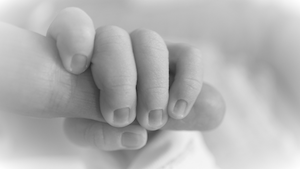Shaken Baby Syndrome

Shaken baby syndrome is a common form of child abuse that occurs when a person shakes a baby or toddler violently. Just a few seconds of violent shaking can cause permanent lifelong damage and life-threatening injuries. [Source]
Unfortunately, shaken baby syndrome occurs quite a bit in the United States. There are over 1,300 cases per year in the United States alone. 25% of shaken babies die as the result of their injuries, while 80% of shaken babies suffer from lifelong disabilities, usually resulting from some type of brain injury. Shaken baby syndrome is the leading cause of child abuse deaths in the U.S. [Source]
There are a number of injuries that are typical in shaken baby syndrome cases, and there are a variety of ways that doctors can attribute the injuries to child abuse or shaking in order to hold the violent perpetrator accountable and also properly treat the injuries to reduce the chances of lifelong disability.
Typical Injuries in Shaken Baby Syndrome CasesAccording to the New York State Department of Health, there are a number of traumatic results that can occur after shaking a small child.
“Immediate symptoms of SBS include tiredness, not eating, no smiling, talking or laughing, difficulty swallowing, sucking or breathing, vomiting, difficulty staying awake, or the baby is very stiff or like a rag doll,” their Shaken Baby Syndrome PSA page reads. “Shaking can cause brain injury, cerebral palsy, blindness, hearing loss, learning and behavior problems, seizures, paralysis, and death. It is estimated that 1,000-3,000 children in the United States suffer from SBS each year. One-fourth of victims of SBS die, and 80 percent of survivors suffer from permanent damage.” [Source]
In a worst-case scenario, just one occasion of shaken baby syndrome can result in a snapped neck which can lead to the immediate death of the infant. Shaken baby syndrome is considered the result of violent child abuse and can result in child welfare and criminal investigations. In the case of a child’s death, the caregiver or assailant could be charged with assault or homicide.
Prevention of Shaken Baby SyndromeThe number one way to prevent shaken baby syndrome and the subsequent injuries or deaths is to properly educate parents as well as caregivers about the extremely serious dangers of shaken baby syndrome. Any person that is caring for a baby should know that if a baby is not hungry or sick, but will not stop crying, that it is okay to put the baby in a safe place (a bed, a crib, etc.) to take a quick break and decompress from the stress.
New parents should also be made aware that it is extremely common for babies to cry loudly for around three hours a day. Babies who suffer from colic (frequent and intense crying in an otherwise healthy baby) can cry for even longer than this for several months. Many different states in the U.S. have implemented laws and protocols for educating mothers before they leave the hospital after giving birth. For example, New York State legislation requires hospitals to offer new parents a short video on the causes and symptoms of shaken baby syndrome before they leave.
How Doctors Can Attribute Injuries to Child Abuse and/or ShakingDoctors will use a variety of diagnostic techniques and tests to diagnose a baby or small child with shaken baby syndrome. This is necessary because physicians do not always receive the truth about whether or not shaking caused a child’s injury, for obvious reasons.
Common tests for shaken baby syndrome include:
- Magnetic resonance imaging (known as MRI) to check for internal injuries in a noninvasive way.
- Blood tests. Some genetic, bleeding, or clotting disorders can cause symptoms that are very similar to shaken baby syndrome and can only be diagnosed through blood tests.
- X-rays, especially in there is evidence of a head injury such as a skull fracture
- Computer tomography (known as CT) scans of the head, abdomen, and extremities.
- Eye exams to check for retinal bleeding, which can be caused by a skull or brain injury.
Depending on the severity of the injuries, the child may have to be monitored in a hospital for a specific amount of time. If the child was reported to have symptoms that looked similar to a seizure, a doctor may keep the baby under intensive monitoring to check for seizures. In the case of an emergency after a shaken baby incident, doctors will usually implement breathing support and emergency surgery to stop brain bleeding.
Some symptoms of shaken baby syndrome, particularly vomiting or extreme lethargy, can be caused by viral infections and should be tested if no other SBS symptoms are present.
In any possible case of child abuse that relates to a baby or small children, doctors should closely examine the injured child in order to find the often hidden evidence of shaken baby syndrome.
Shaken Baby Syndrome DefenseDespite all the above, doctors make mistakes. There are many instances when doctors incorrectly believed a baby died from injuries that resulted from shaking. If this is the situation you’re in, know that the truth of your innocence can get out. To make that happen, you will need a team of lawyers and doctors on your side to fully evaluate your case, analyze the facts and medical information, and provide a more robust second opinion and analysis to your accusers.
Photo source: Pixabay
 Lounsbery Law Office, PC Home
Lounsbery Law Office, PC Home